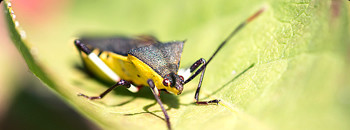Cathie Lavis is a professor of horticulture at Kansas State University. Her expertise includes landscaping, arboriculture, irrigation, and landscape contracting. She provides insight for homeowners and gardeners on plant care, selection, and more.
You do not have to walk the historic narrow streets of Orvieto, Italy to realize flowers and plants create romance, ambiance and natural atmosphere.
Just one striking plant in a single pot can brighten a corner of your balcony or reward you with fresh tomatoes or herbs. While thoughtfully stylized containers of plants or cascading mixtures of flowers and foliage can have a real impact too.
Selecting the right container is important. Consider the size, location, style and, of course, what you want to grow when making your choice. Both the container and plant must suit the site, so aim to bring together a style that blends with your home, outdoor furniture and the surfaces around the plant (whether they are concrete, gravel, decking or brick).
Terracotta weathers nicely and harmonizes well in almost any setting. Terracotta keeps plant roots a little cooler than plastic containers; however plastic is lighter and easier to move. Plastic withstands harsh winter weather while terracotta can crack when temperatures get too cold. On the opposite end, inexpensive plastic pots may break down under UV light; however they can hold moisture better than terracotta. When it comes to wooden containers, make sure you treat it with a waterproof preservative before planting. Glazed ceramic makes ideal containers, but be sure they have drain holes. Regardless of the material, drain holes are critical. In order to avoid soil loss through the holes, line the bottom of any pot with a sheet or two of newspaper.
When planting, use a soilless potting media purchased from a reputable plant nursery. Watering will depend upon the size of the container, type of plant, location of the container (full sun versus shade) and the time of year. You can use your index finger to feel for moisture in the soil so you know when it’s getting thirsty. A rule of thumb is if the top 1” is dry, it is time to water. Water thoroughly, that is, so water runs out the bottom of the pot. This will allow salt to move out of the soil profile.
There is an enormous range of plants that can be grown in containers, from annual bedding plants and foliage to small vegetables and trees. Containers allow you to grow and enjoy a variety of plants in just about any location.

